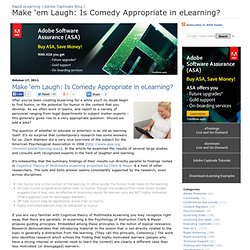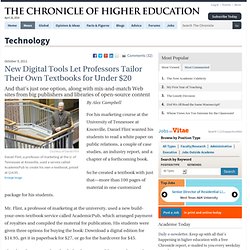

Mon zebu. 40 Quick Ways To Use Mobile Phones In Classrooms. Added by Katie Lepi on 2012-10-13 Your students have smartphones. If you’re looking for some simple and straightforward ways to easily integrate these powerful little devices into your classroom, look no further. The following 50 tips are simply that: tips. So use a few and toss the rest. However, be sure to try out at least one or two of them! Use educational apps : One of the simplest strategies for engaging students using smartphones involves taking advantage of the thousands of educational apps as supplements.
How Schools Can Teach Innovation. Is eReading on the Rise? According to the latest report on eReading from the Pew Internet and American Life Project, "the increasing availability of e-content is prompting some to read more than in the past and to prefer buying books to borrowing them. " Pew describes e-content as eBooks and "other long-form content such as magazines, journals, and news articles in digital format on an e-book reader, tablet computer, regular computer, or cell phone.
" This new report summarizes the findings of several studies, including the responses of almost 3,000 participants in the U.S. who were 16 or older to questions about their reading preferences. The finding that 43% of Americans have read e-content at some time during the past year does indicate some changes in reading habits. Highlights from the report include: Context seems to play a role in how we choose to read. More Questions and Continued Research How many readers purchase both print and digital versions of the same book? The Apple iPad will not save your school.
Administrators around the globe are looking for the ‘next big thing’ to save students from a mediocre or irrelevant education and it seems that many have decided that Apple’s iPad is the catalyst to an answer.

Apple & education: take 2 (or 3) Will Apple save your school? That was the hope back in 2002 when the first eMac was unveiled: “By listening to educators and including their suggestions in the development of the product, Apple is showing why they have led the market for technology in education for the past 25 years,” said James L. Konantz, Asst. With all of the money spent on eMac labs and classroom computers, have schools succeeded in developing meaningful and relevant curriculum that closes the achievement gap, promotes higher-level thinking and prepares students for the 21st century? Early results… Early reports from pilot projects in 2010-2011 look promising, but it is important to examine how these initial roll-outs occurred and who was involved. …from early adopters. Education Startups: Learning, Technology, Innovation, and Small Business.
By Melissa Venable A growing focus of small businesses and incubator groups, technology solutions created by new companies can fill the voids left by colleges, universities, and school districts facing shrinking budgets.

This is crucial because those same schools are also working to meet technology requirements and initiatives driven by agencies concerned about quality education. Entrepreneurs are developing innovative educational products and services that incorporate the use of technology. What is an education startup? The recent EDUCAUSE conference featured a new forum to connect schools and businesses called "Start-Up Alley. " Employ 50 or fewer peopleGenerate less than $1 million in annual revenueMarket a product or service less than 5 years oldCommit half of the company's resources to research and development of their products and servicesHave less than 10% of the institutional market share or less than 10% of the target customer audience for their products or services.
Make ‘em Laugh: Is Comedy Appropriate in eLearning? InShare3 After you’ve been creating eLearning for a while you’ll no doubt begin to find humor, or the potential for humor in the content that you develop.

As we often work in teams, and report to a variety of personnel ranging from legal departments to subject matter experts – this generally gives rise to a very appropriate question: Should we add a joke? The question of whether to educate or entertain is as old as learning itself. It’s no surprise that contemporary research has some answers for us. New Digital Tools Let Professors Tailor Their Own Textbooks - Technology. By Alex Campbell For his marketing course at the University of Tennessee at Knoxville, Daniel Flint wanted his students to read a white paper on public relations, a couple of case studies, an industry report, and a chapter of a forthcoming book.

So he created a textbook with just that—more than 100 pages of material in one customized package for his students. Mr. Flint, a professor of marketing at the university, used a new build-your-own-textbook service called AcademicPub, which arranged payment of royalties and compiled the material for publication. His students were given three options for buying the book: Download a digital edition for $14.95, get it in paperback for $27, or go for the hardcover for $45.
The idea of customized textbooks has been around for years, but until recently use of the option was rare. Indeed, price seems to be driving the move toward customization. A Publishing Upstart So far, Ms. About 600 instructors have signed up for the service so far, but Ms. Mr. Ms. Mr.